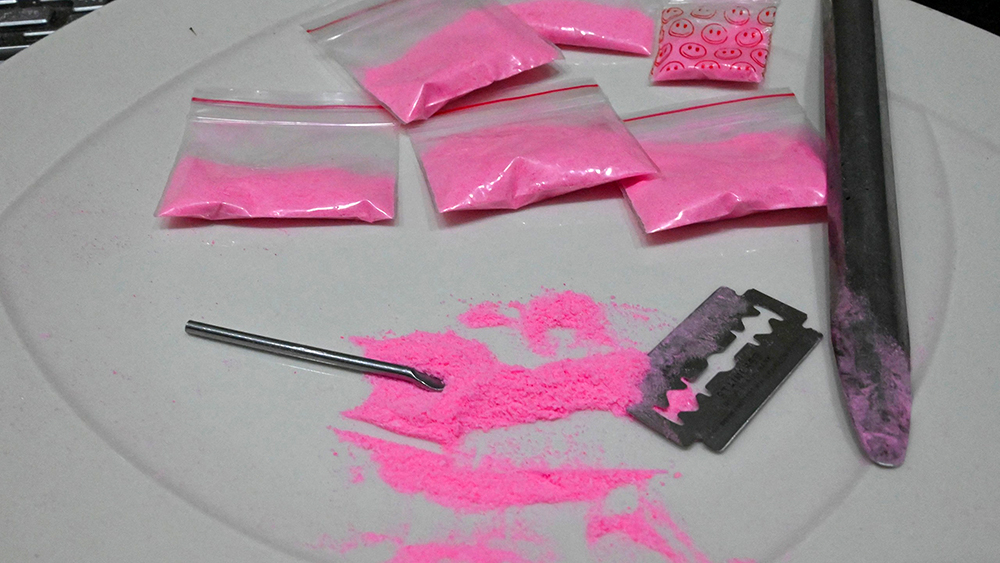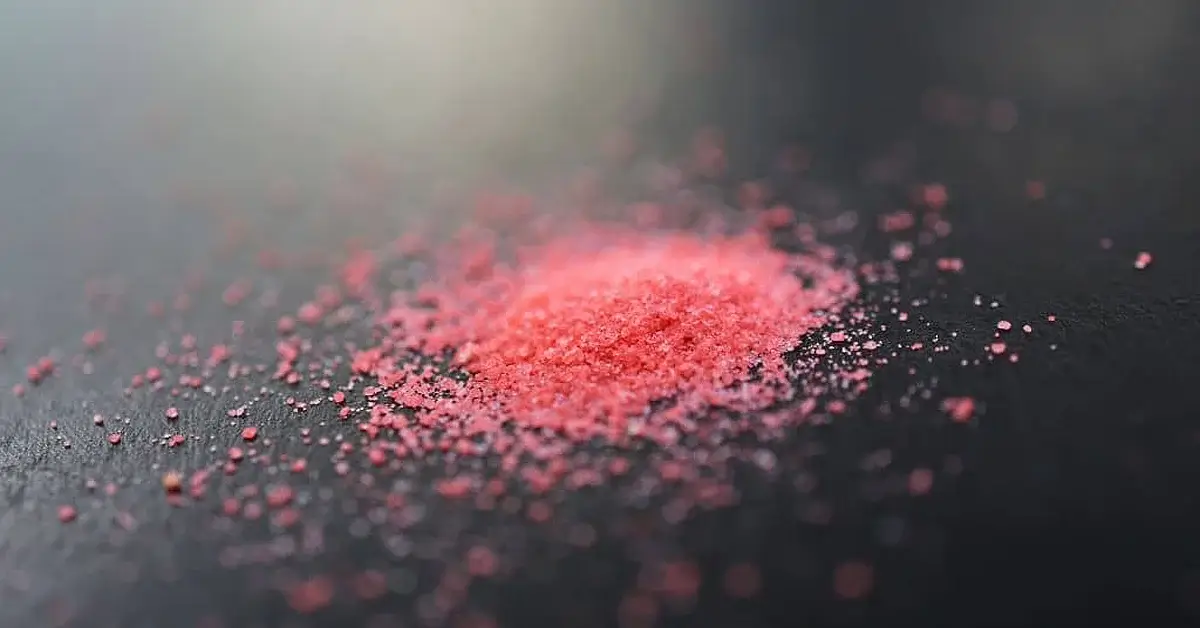Pink Cocaine
The surge in popularity of pink cocaine can be attributed to its vivid hue and purported ability to enhance party experiences. Despite its innocent-looking pink color, this drug comes with various associated hazards. In this article, we will delve into the details of this Colombian drug, known locally as “Tusi” or “Tuci“, and distinguish it from traditional cocaine.
What Is Pink Cocaine?
Contrary to its name, pink cocaine is not a variant of cocaine. It is a synthetic substance called phenylethylamine 2C-B, which is made up of pink food coloring, strawberry flavoring, ketamine, caffeine, and MDMA. As a result, its effects are similar to those of ecstasy, making it a preferred drug among teenagers and young adults who frequent the club scene.
The drug’s origins can be traced back to the 1970s when a famous organic chemist named Alexander Shulgin created it in a lab. Shulgin was known for his work in designing and testing the effects of psychedelic drugs. While he was a professor at Harvard University, he gained widespread recognition for creating MDMA, commonly known as ecstasy.
Initially, the purpose of inventing 2C-B was to improve libido and treat erectile dysfunction. It was marketed as Performax or Erox until the mid-1990s. However, in 1995, the United States Drug Enforcement Agency reclassified it as a Schedule I Controlled substance, which meant it was deemed unacceptable for medical use and was taken off the market.
Cocaine vs. Pink Cocaine
Apart from their potential for addiction, there are very few similarities between pink cocaine and cocaine. Cocaine is a processed form of the coca plant, whereas pink cocaine is a synthetic substance made in a lab. Additionally, white powder cocaine is categorized as a Schedule II controlled substance in the United States because it has legitimate medical uses, whereas pink cocaine does not.
The effects of cocaine can vary depending on the quantity consumed, the method of consumption, the chemical composition, and the user’s individual factors.
A few of the immediate effects of cocaine include:
-Increased heart rate
-Dilated pupils
-Feelings of joy
-A rise in body temperature
-An energy boost
-Decreased appetite
-Increased sexual urges
Pink cocaine, in contrast, is a synthetic substance classified as a phenylethylamine. This type of drug is known for its stimulant and psychoactive effects, much like ecstasy. Pink cocaine is primarily used as a party drug and is often found in nightclubs.
The intensity of the effects of pink cocaine can vary, depending on the amount taken and the other substances it may have been combined with.
Side effects of pink cocaine may include:
-Hallucinations
-Euphoria
-Nausea
-Vomiting
-Agitation
-Rapid heartbeat
-High blood pressure
-Seizures
-Respiratory depression

Pink Cocaine Abuse
Pink cocaine’s potential for abuse is high because it can make people feel comfortable and social. It comes in different forms that can be used to achieve a high. One way is in pill form, which is easy to transport and discreet. Another common method is snorting the drug, which involves crushing up the pill and inhaling the fine powder through the nose. Although injection is also a way to consume the drug, it is not popular because it is inconvenient and usually avoided by people who use the drug recreationally.
The Effects Of Pink Cocaine
Despite its popularity as a party drug, pink cocaine is not a harmless substance, and can be as dangerous and addictive as any other drug. Using drugs that contain multiple toxic substances can have long-lasting effects. Even small amounts of pink cocaine mixed with the wrong controlled substance can lead to overdose.
The effects of this drug depend on the amount consumed. Small doses can cause a rise in heart rate, increased sexual desire, and a heightened sense of pleasure. However, larger doses can lead to an increased heart rate, nausea, vomiting, hallucinations, agitation, and overdose.
Below are some symptoms of pink cocaine overdose:
-Clammy skin
-Vomiting
-Shallow breathing
-Blue tinge to face, lips, and fingernails
-Respiratory distress
-Unresponsiveness
-Limp or lifeless
Yet another perfectly good street drug that somebody somewhere decided to fuck up just like all the other drugs readily available on the street. RIP drug game.




